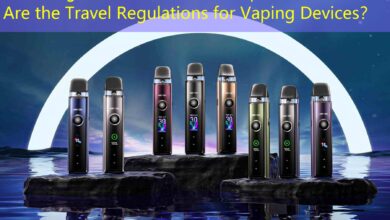Vapor vs Smoke: Understanding the Key Differences and Health Implications!
Introducing the Distinction: Vapor vs Smoke
In the ever-evolving world of nicotine consumption, two terms often arise: vapor and smoke. While they may seem interchangeable at first glance, a deeper understanding reveals significant differences between the two. With the rise of e-cigarettes and vape pens, it’s crucial to examine what sets these two forms of inhalation apart. This article navigates through their characteristics, health implications, and cultural perceptions that define vapor and smoke, aiming to clarify their impact on society.
What is Smoke?
Smoke is the product of combustion, originating from materials that burn and release particles into the air. When tobacco is ignited, a complex mixture of gases, tar, and solid particles is produced, which can be harmful to both the smoker and those exposed to secondhand smoke. The presence of toxic substances in traditional cigarette smoke—such as carbon monoxide and formaldehyde—poses grave health risks. Over the years, numerous studies have highlighted the correlation between cigarette smoking and severe health issues, including cancer, respiratory diseases, and heart problems. Consequently, smoking has faced a range of societal criticisms and legal restrictions, promoting a gradual decline in its prevalence among younger generations.
The Nature of Vapor
In contrast, vapor is generated through the process of vaporization rather than combustion. Electronic cigarettes and vaping devices heat a liquid, often containing nicotine, flavorings, and other chemicals, transforming it into a vapor that users inhale. One primary perception of vapor is its relatively less harmful composition compared to smoke. Studies indicate that vapor typically contains fewer toxic substances, appealing to those seeking alternatives to traditional smoking. For instance, a large-scale review conducted by Public Health England found that vaping is at least 95% less harmful than smoking conventional cigarettes. This disparity has prompted many smokers to consider vapor as a less detrimental option.
Comparative Analysis: Health Impact
To further illustrate the differences in health implications between smoke and vapor, consider the following comparison:
| Substance | Health Risks | Toxicity Level |
|---|---|---|
| Smoke | High risk of cancer, heart disease, respiratory illnesses | Contains tar and numerous carcinogens |
| Vapor | Potential risks still under investigation; generally considered lower risk | Fewer toxic compounds; less harmful profile |
While both substances can contain nicotine, vapor tends to have a more controlled delivery depending on user preferences. Many vaping devices come with customizable settings, allowing users to adjust nicotine levels and flavors, which can cater to various tastes and goals, such as quitting smoking altogether.
Cultural Perception and Acceptance
Although both smoke and vapor have distinct physiological effects, their cultural acceptance varies widely. Traditionally, smoking has been embedded in social rituals, often seen as a means of relaxation or socializing. However, as awareness of its health risks grew, societal norms shifted. In contrast, vaping emerged as a trendy alternative, gaining significant traction across diverse demographics, particularly among younger adults. This newfound acceptance brings a new set of challenges and controversies, as public health advocates debate the long-term implications of widespread vaping.
Legal Landscape and Regulation
The legal framework governing smoke and vapor products is evolving. Many countries have instituted strict regulations regarding smoking, including public smoking bans and age restrictions. Conversely, vaping regulations are still in flux, often varying by region. Some governments have embraced vaping as a safer option for smokers, while others express concerns about its accessibility to minors. The necessity for comprehensive regulation remains crucial to ensure public health and safety amidst this ongoing transition.

Frequently Asked Questions
What are the main benefits of switching from smoke to vapor?

Switching from smoking to vaping can significantly reduce exposure to harmful toxins found in cigarette smoke. Vapor generally contains fewer harmful chemicals and can help smokers manage their nicotine intake more effectively. Additionally, many users report that vaping offers a wider variety of flavors, making the experience more enjoyable.
Is vaping completely safe?
While vaping is considered less harmful than smoking, it is not entirely risk-free. The long-term health effects of inhaling vapor are still being studied. Users should be aware of the potential risks and make informed choices. Consulting healthcare professionals for personalized advice is always recommended.
Where to purchase vaping products?
Vaping products can be easily purchased from a variety of online platforms. For a comprehensive selection of e-cigarettes, vape pens, and e-liquids, visit our website, where you can find quality products tailored to your preferences.




